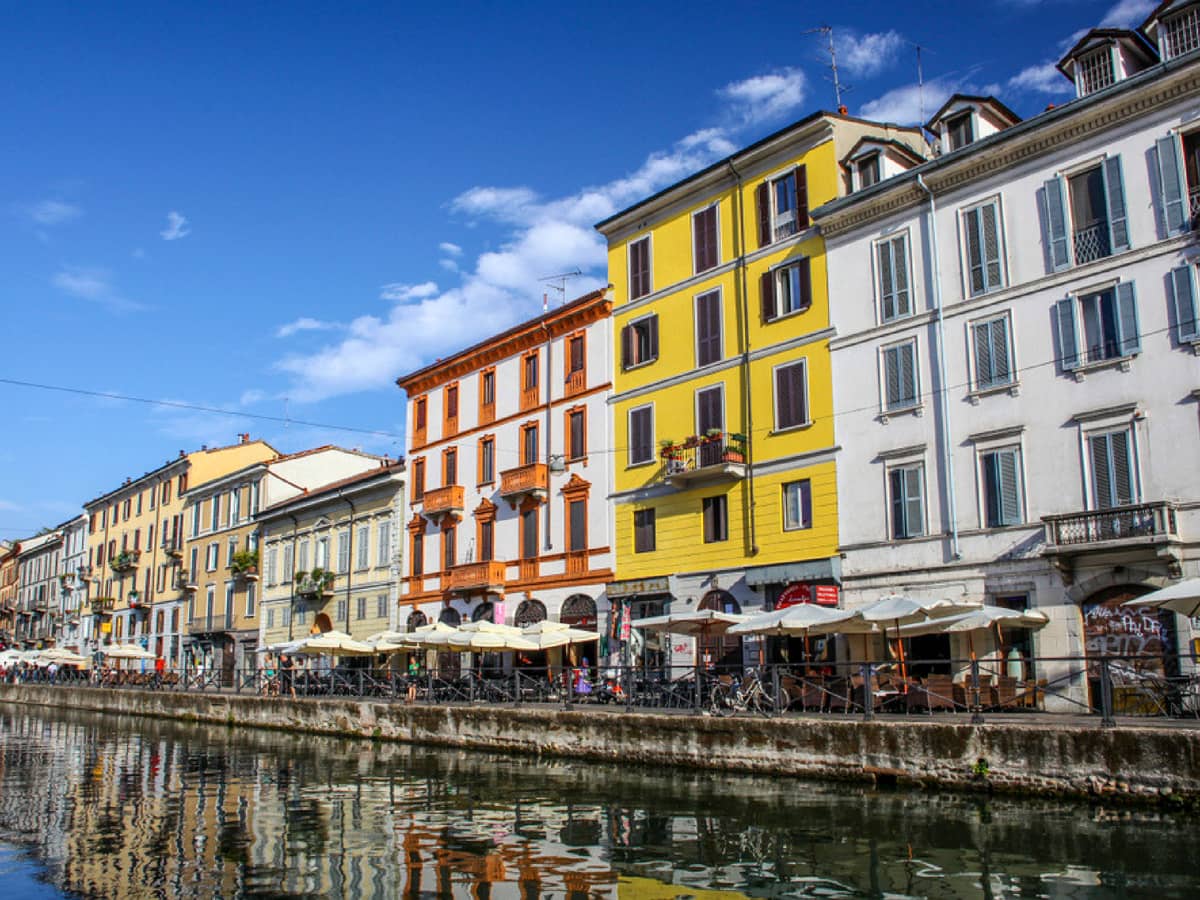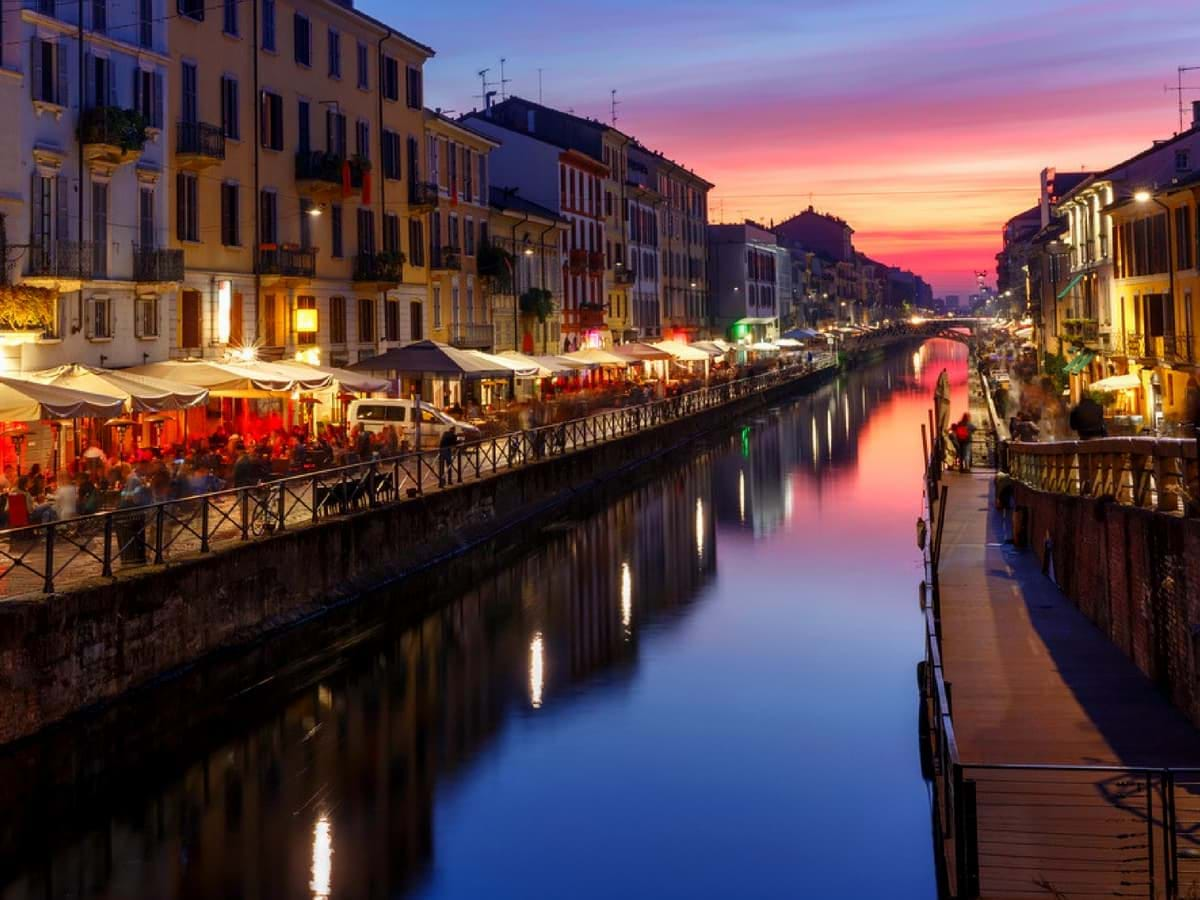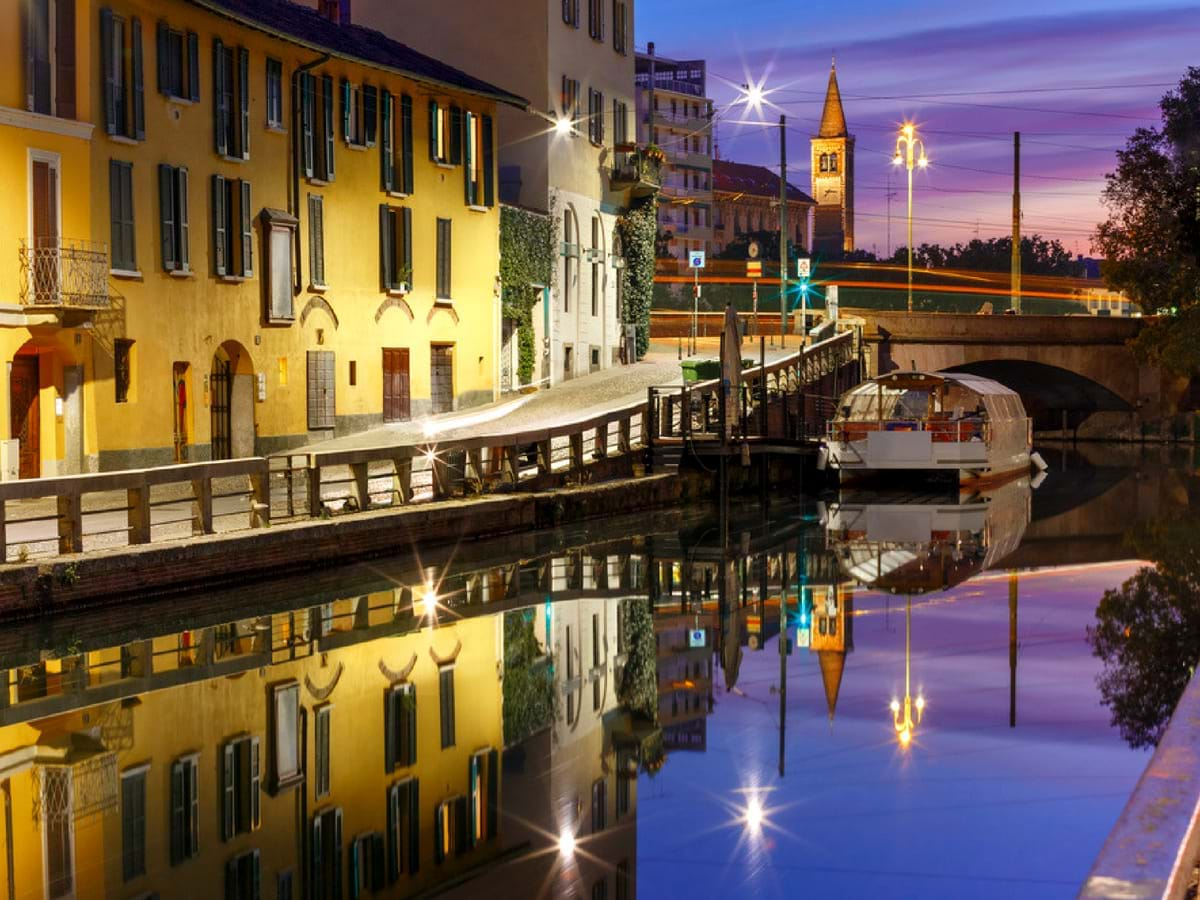Today we’re chatting about the Naviglio Grande, one of the first and most successful canals in Milan. This post will bring forth an introduction to the canal, as well as detailing on its history and what you’ll see as you traverse the Naviglio Grande and the Navigli district.

About the Naviglio Grande
The Naviglio Grande is a canal that begins in Tornavento and ends in Darsena di Porta dock in Milan. At 31 miles (49.9 km) long, it acts as both an irrigation and navigation system between the locations, becoming a prominent part of local history. As it grew and became more prosperous, this canal system successfully served as a transport link between numerous locations for seven centuries. There are also a selection of other navilgi in Milan, such as the Naviglio Pavese, the Naviglio Martesana, the Naviglio di Paderno and the Naviglio di Bereguardo. All of these canals collectively make up a powerful canal and irrigation system, which ensured speedy transport and productivity for years on end.

History of the Naviglio Grande
Constructed in 1177, the Navliglio Grande is the oldest and most important canal in Milan’s canal system. It was created as a result of a drainage ditch being widened and was given the name Ticinello. It was extended as far as Milan in 1209. With consistent improvements over the years, it became a navigable canal in 1272. As the first and largest canal in Europe, it became an important transport link for commodities between Milan, Lake Maggiore and Switzerland. Thus began the trade of goods and services, some examples being coal, meat, wine, fish, wood, salt, grain and rice. Over the years, the system extended further to different locations across North Eastern and Western Europe.

What You'll See Throughout
There are numerous sites to see as you travel along the Naviglio Grande, as well as through the Navigli district. You’ll see the canals mentioned above, built way back in the 12th century. Fun fact: Leonardo da Vinci took part in building the canal’s dams, to ensure that the canals flowed smoothly and consistently. He also designed the canal locks, which can still be seen at the Naviglio di San Marco basin today. The Basilica di San Lorenzo church can also be seen and visited here. Constructed in the 4th century, it’s one of Milan’s oldest churches. Built atop of the remains of a Roman amphitheater, you can witness frescoes that are over 1,500 years old within the Byzantine St. Aquilino chapel.
There are several art galleries throughout the neighborhood, which showcase the work of younger artists in particular, forever having new talent on display in chic, modern spaces. With various cafés and restaurants throughout serving a range of cuisines, you’ll be spoilt for choice with every meal. And don’t you worry, you can get the best of Milan’s gelato here too! The neighborhood also has a number of shops and markets for a spot of retail therapy if needed. One thing worth noting in the Navilgi district is the nightlife, which always seems to be vibrant and bustling. With distinctive bars littered throughout, you’re sure to enjoy an evening spent along the Naviglio Grande.
Click here for a selection of our tours throughout Milan!


